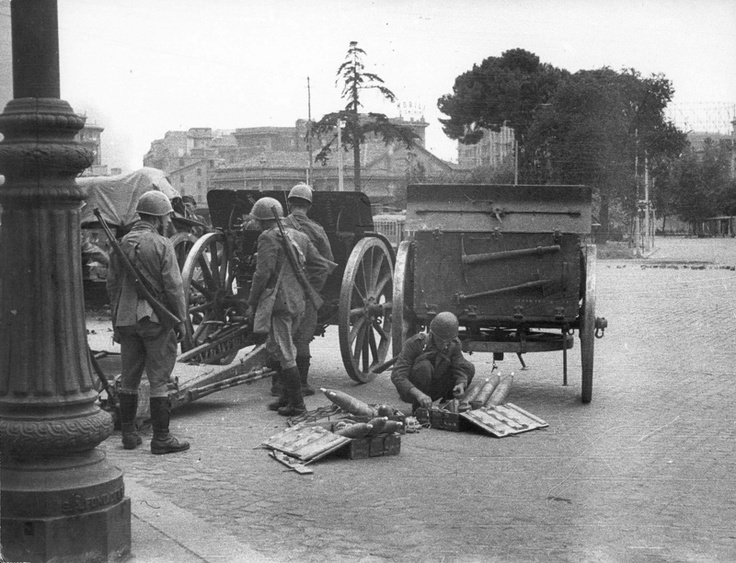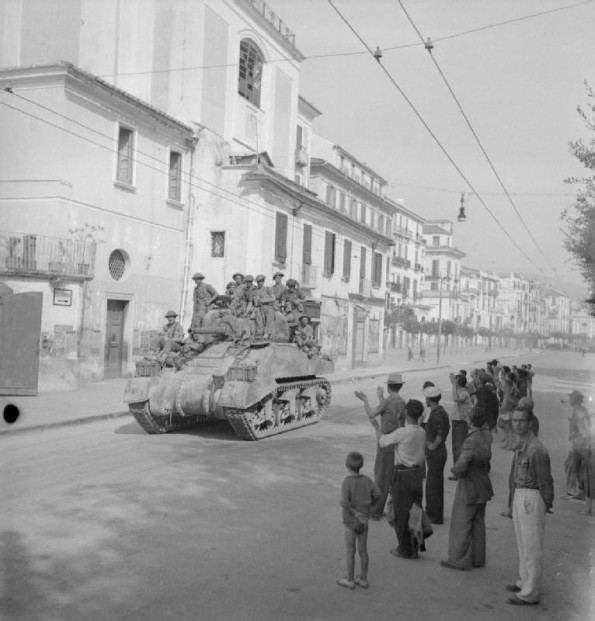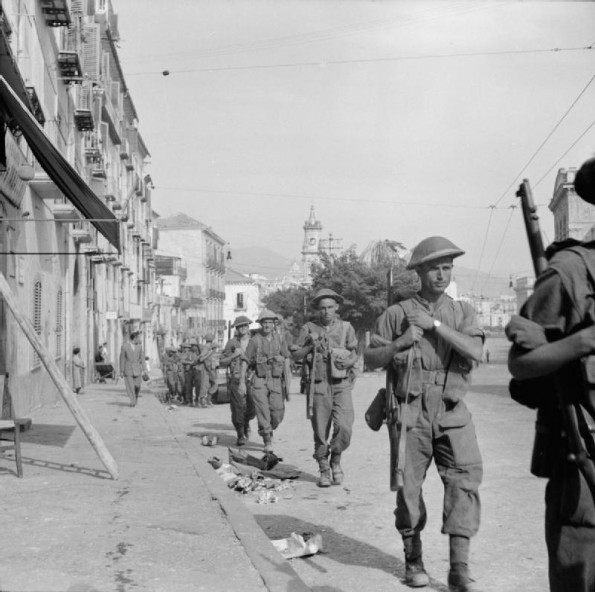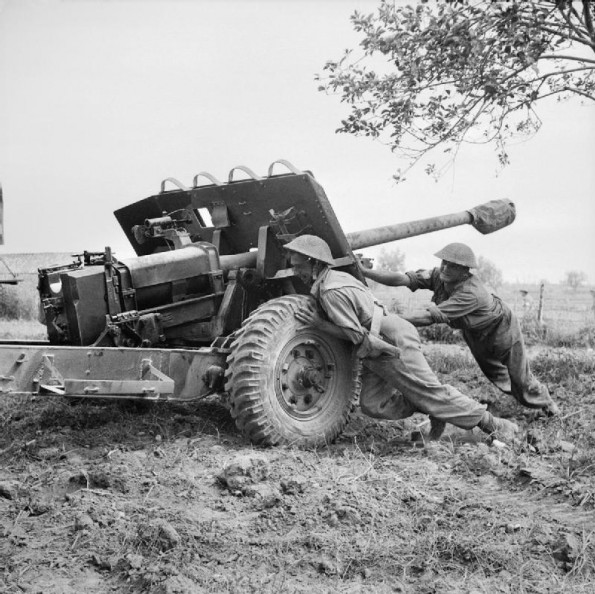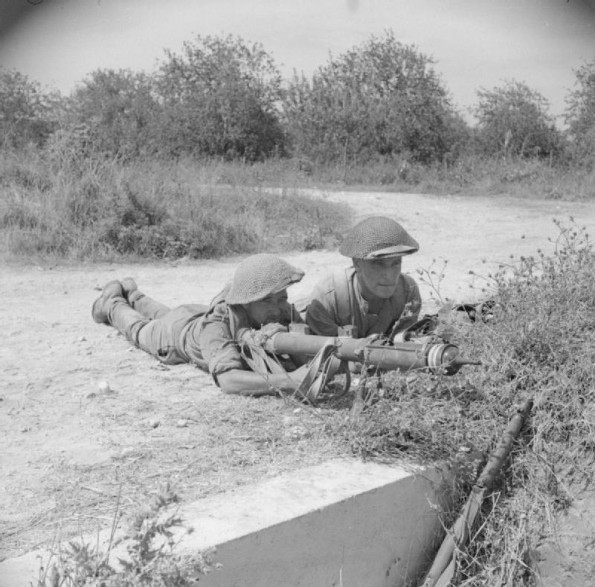Aegean
Castelrosso in the Dodecanese is occupied by the British. 2 British officers are dropped on Rhodes to contact the Italian commander there, Gen Campione. However, on September 11 he surrenders to the German forces on the island.
[Air Operations, Bismarcks
V Bomber Command B-25s attack barges along the New Britain coast.
[Air Operations, CBI
BURMA- 341st Medium Bomb Group B-25s attack the viaduct at Gokteik.
- 10 11th Medium Bomb Squadron B-25s attack the Hankow port area and a warehouse near Wuchang, 6 449th Fighter Squadron P-38 fighter-bombers attack the Whampoa port area.
- 76th Fighter Squadron P-40s down 5 A6M Zeros over Hankow during the early afternoon and a 449th Fighter Squadron P-38 downs a Zero over Hankow during the late afternoon.
Air Operations, Europe
US 12th AIR FORCEITALY:
- XII Bomber Command B-17s, B-25s, and B-26s attack the communications network leading to the Salerno area from throughout central Italy.
- IX Bomber Command B-24s attack a Foggia satellite field.
- NATAF aircraft provide direct and general support for Allied forces within the beachhead area.
- 12 27th Fighter-Bomber Group A-36s attack a German vehicle column moving north through Lagonegro, 70 road miles from Salerno. It is estimated 177 vehicles are destroyed and 246 are damaged. During these attacke only 1 Luftwaffe fighter is engaged, a Bf-109 that is downed by a 524th Fighter-Bomber Squadron A-36.
- In other fighter action, 3 Luftwaffe fighters are downed over or near the invasion beached by 1st and 31st Fighter Group aircraft.
- During the night, the 12th Medium Bomb Group B-25s attack several communications centers.
Corsica and Sardinia
Beginning this day and continuing over the next 3 weeks the Germans begin to evacuate their garrison of about 25,000 from Sardinia, moving first to Corsica and then the Italian mainland. Several of the transport ships are sunk on September 21 by Allied air and submarine attacks. Various fairly small French contingents land on Corsica from September 14 onward. They harass the retreating Germans and inflict some damage.
[Eastern Front
Units of Tolbukhin's and Malinovsky's armies mount a seaborne attack in the Sea of Azov and capture Mariupol. Inland on the Donets sector they take Barvenkovo, Volnovakha and Chaplino. They also land troops in Novorossiysk and a major engagement begins there. The German 17th Army begins to withdraw over the Kerch Strait into the Crimea from its bridgehead at Novorossysk. In this sector the North Caucasus Front is operating under Gen Ivan Petrov, supported by the Black Sea naval forces under the command of Vice-Adm Vladimirsky. 8,935 Russian Naval Infantry land from 129 small craft at Novorossisk.
NORTHERN SECTORThe Soviet juggernaut shows no sign of halting as Mariupol is ocupied by the 28th and 44th Armies and Barvenkovo by the 1st Guards Army. In the Kuban, the Soviet North Caucasus Front hurls 250,000 troops against the beleaguered 17th Army. As fighting rages in Novorossisk, the Germans begin to evacuate their forces west into the Crimea.
Walter Nowotny with Adolf Hitler |
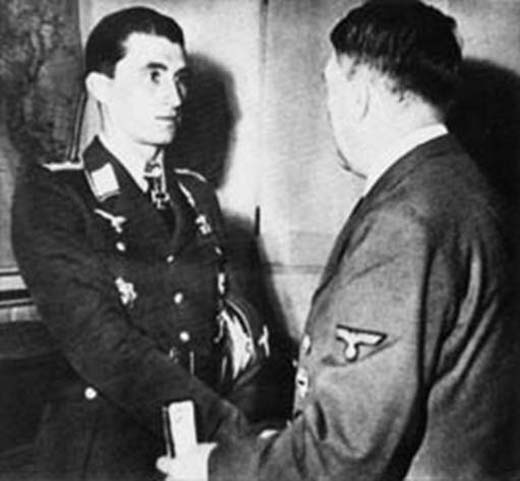 |
Mariupol falls to the 28th and 44th Armies as the XXIX Corps is forced back. Barvenkovo falls to the 1st Guards Army.
Fighting rages in the Kuban as the North Caucasus Front launches uncoordinated attacks against the 17th Army, committing nearly 250,000 men to the offensive. The 18th Army enters the outskirts of Novorossiysk and becomes embroiled in bitter fighting with XLIX Mountain Corps. During the remainder of the month the 17th Army evacuates 250,000 soldiers of its V, XLIX Mountain and XLIV Corps from the Kuban.
[Germany, Home Front
Hitler broadcasts to the German people on the Italian surrender.
[Italy
The Germans occupy Rome after brief skirmishes with Italian troops. Italian soldiers in northern Italy are disarmed by the Germans. Subsequently, Italian units are disbanded in the Balkans and France as well. The Germans neutralize a total of 43 Italian divisions. The American sector of the Salerno landings is fairly quiet today, with the front being pushed further inland. In the British sector Montecorvino airfield and Battipaglia are occupied in the morning but the Germans concentrate most of their local reserves here, including a number of tanks from 16th Pzr Div and retake the positions by nightfall.
|
|
In Calabria the XIII Corps of Montgomery's 8th Army reaches a line from Catanzaro to Nicastro, while the German forces south of the beachhead, including those engaging Montgomery, withdraw north to reinforce the German cordon. They rely on small parties, demolitions and Montgomery's natural caution to hold up 8th Army's advance.
King Victor Emmanuel III, his family and following, meet in Brindisi on the corvette Baionetta.
[Malta
The Italian fleet, including 5 battleships, arrives to surrender with huge crowds watching. Many smaller craft reach other Allied ports and some are scuttled in their home ports.
Italy's Fleet Heads for Malta |
 |
Mediterranean
- Over the next week the British land on 7 of the Dodecanese Islands.
- The British minelaying cruiser Abdiel, carrying 400 troops, sinks when she strikes a mine at Taranto. Abdiel had left Bizerte on the 8th in company with the US light cruiser Boise. 48 of the crew are lost along with 101 troops of the 6th Parachute Battalion. 126 are wounded.
New Guinea
The Australian 7th Div, after reorganization, takes the place of the US 503rd Parachute Regt at Nadzab and begins to advance on Lae. Forward elements have reached Heath's Plantation.
[Solomons
The Americans are having to fight unexpectedly hard for Arundel Island. The 2nd and 3rd Battalions of the 27th Infantry, 25th Division, are attached to the 43rd Division and ordered to Arundel to help the 172nd Infantry. The 27th Infantry commander is to be responsible for future operations there.
[Pics from September 10, 1943
|
|
|
|

